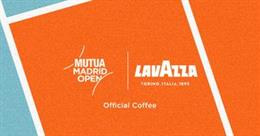Sign up for one of our email newsletters.
Updated 1 hour ago
In the 1964 Supreme Court case Jacobellis v. Ohio, Justice Potter Stewart described his now-infamous threshold test for pornography: “I know it when I see it.”
The same sentiment holds true for a substance associated more often with love, not sex: craft chocolate.
The specialized segment of the chocolate market is nascent but growing, as reflected on shelves in Wal-Mart, grocery stores and specialty shops. Consumers gearing up for Valentine's Day now face a dizzying array of beautifully packaged bars but have limited information about their actual contents. A bar might list a percentage or an origin, but what does that tell chocolate lovers about the flavors within? Without context, very little — and that isn't an oversight.
Craft beer and specialty coffee are established sectors, but specialty chocolate is still defining itself; there is no regulation of terms such as “craft,” “bean-to-bar,” “artisanal” or “small batch,” and there are no standardized definitions of what those terms actually signify. Bean-to-bar, for example, is one of the most ubiquitous terms in specialty chocolate but simply means a focus on the product from the cacao bean to the final chocolate bar.
“That says nothing about quality,” says Robbie Stout, the co-founder of Ritual Chocolate in Park City, Utah. “Hershey is bean-to-bar. Mars is bean-to-bar. Nestlé is bean-to-bar. Ritual is bean-to-bar. But Ritual is not Hershey, Mars or Nestlé.”
When Stout mentions “quality,” he means a combination of awareness and skill. “To me, craft chocolate is about taking the process seriously, always improving, breaking down the steps and perfecting them — and always striving to achieve better quality while also growing in quantity,” he says.
Not all craft makers agree that growth is a laudable goal, but the focus on quality dates to Mayan cultivation of cacao and production of chocolate products as early as 400 B.C. The notion of fine cacao and chocolate was passed on from indigenous people to Europeans and “really took off with excitement among French chocolate producers,” says Carla Martin, executive director of the Fine Cacao and Chocolate Institute. “Companies like Bonnat, Valrhona and Bernachon in the 1970s, 1980s and 1990s began producing single-origin chocolate products that were meant to express a sense of terroir through their flavor.”
In 1997, winemaker John Scharffenberger co-founded Scharffen Berger Chocolate Maker in Berkeley, Calif., and helped establish this alternative to large-scale chocolate in the United States. Through a focus on small-scale production methods and higher-quality cacao beans, Scharffenberger empowered pioneers including Steve DeVries and the co-founders of another Utah company, Amano Artisan Chocolate, Clark Goble and Art Pollard. The Hershey Co. acquired Scharffen Berger in 2005.
Since then, the specialized industry has increased significantly, ballooning to more than 200 makers in North America alone. In the absence of a unified definition, the consensus seems to be that this smaller segment of the market reflects a commitment to craftsmanship, quality and flavor: “Craft chocolate can really only be defined in opposition to what it's not,” says Todd Masonis of Dandelion Chocolate in San Francisco. “It's not large industrial chocolate.”
Similar to industrialized coffee (over, say, a specialty brew from an independent roaster), mass-produced confections are intended to guarantee a consistent smell and taste, achieved through rigorous oversight and a careful blending of cacaos. The smaller sector, on the other hand, embraces diversity. “Our quest is flavor,” Ritual's Robbie Stout says, underscoring the recognition within the craft industry that cacao is an agricultural product with seasonality, varietal diversity and a variety of growing and processing conditions that affect the flavors of the end product.
But that embrace of variability presents challenges, Pollard says. “I think there are a lot of people who are getting into the chocolate thing because of the attention or the fact that it seems to be kind of cool, but I don't really think it's sustainable. You are talking about an industry being built on a fraction of 1 percent of the cacao supply, the cream of the cream. People need a business model to get rid of bad-quality beans. If a shipment of beans is bad, it can put a maker out of business.”
Or, worse still, the maker can turn that inferior cacao into chocolate, explains purveyor Sunita de Tourreil, founder of The Chocolate Garage, a tasting room and retail shop in Palo Alto, Calif., that also finances exclusive bars through a “chocolate futures” program. “You have makers who are overpaying for a cacao that is deeply flawed and then turning out bars that are problematic,” she says. “This is really concerning to me, because I'm interested in seeing a healthy ecosystem for cocoa and chocolate where price and quality are connected.”
There are significant differences among what the evolving industry actually offers, and a pretty wrapper is not the best indicator of great flavor or pure craftsmanship, as demonstrated during the controversy in 2015 involving Brooklyn-based chocolate makers Mast Brothers. The company had used couverture (pre-made chocolate often used as a base in pastries and confections) in some of its bars while claiming to work from cacao beans. Working from couverture is significantly easier than sorting, shelling and roasting cacao beans, which was why certain makers were frustrated, but it also highlighted how little consumers knew about what they were buying.
So how does a chocolate lover make informed decisions? Seek counsel in shops and online, and “taste, taste, taste,” encourages Aubrey Lindley, co-owner of Cacao, a specialty chocolate shop in Portland, Ore. “Be open to new flavors and new experiences, but also be honest about your experience in the mouth. If it doesn't taste good and bring pleasure, then it's not good to you.”
And embrace exploration, says Clay Gordon, author of the 2007 book “Discover Chocolate.” “If you have a $10 bill in your pocket and walk into a chocolate specialty store, you can choose from among the best chocolates in the world, while $20 means you can choose from all but a very select few,” he says. “You can't do that with wine and other gourmet foods. That's an incredible thing.”
Our editors found this article on this site using Google and regenerated it for our readers.













